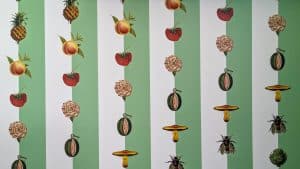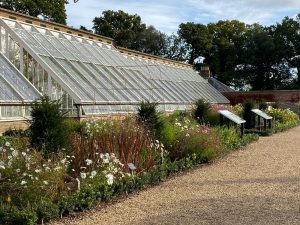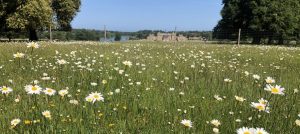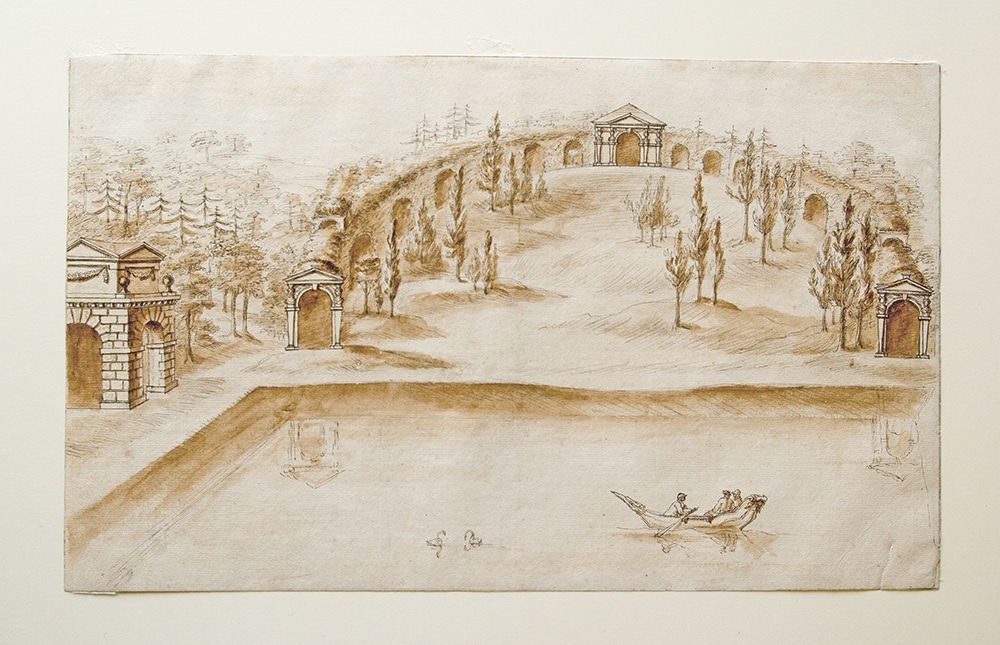
The Holkham Landscape – a history of incredible plans and big name designers.
May 29, 2020 | Garden goss | 5 minute read

The park as we see it today may look natural, but it is the culmination of many years of careful planning and landscaping. Indeed, some of the foremost landscape designers of their day were employed to develop this landscape setting for Thomas Coke’s Palladian mansion.
Work on preparing an appropriate setting for Holkham Hall started years before the construction of the building itself. In the 1720s and 1730s, Obelisk Wood was planted and the obelisk and temple built within it. An earlier version of the lake was created by damming a tidal creek at the northern end. At this stage there were formal lines of trees, avenues and vistas, which were geometric in design as was the fashion at the time.
William Kent
William Kent (1685-1748) was a great friend of Thomas Coke, the builder of Holkham Hall and founder of the collections. The two men met in Rome while Thomas was on his Grand Tour, and Kent subsequently created designs for both the hall and the surrounding park.
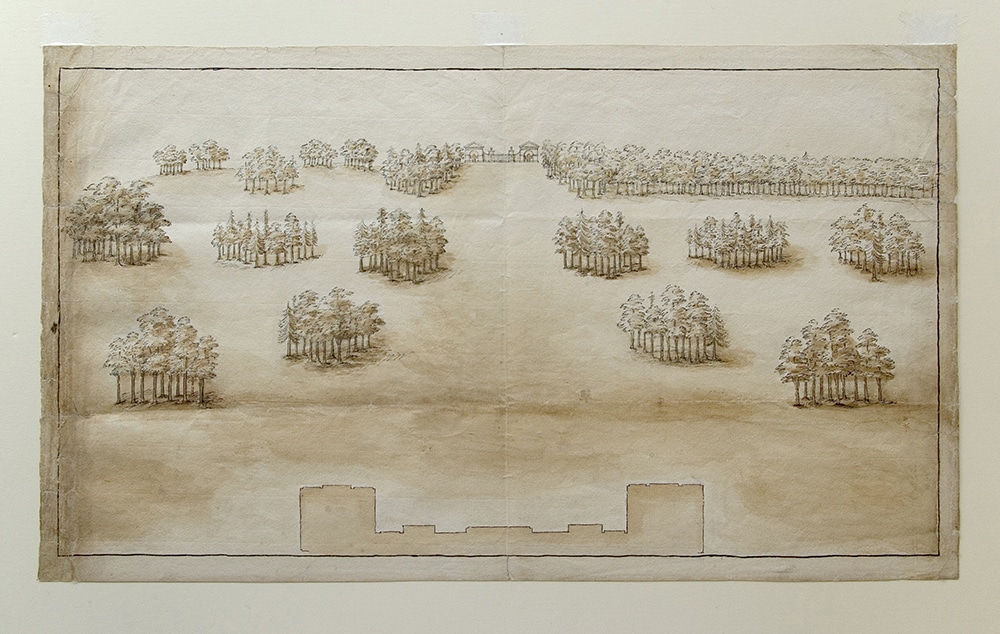
Clumps on the north lawn proposed by William Kent
Kent started to modify the landscape around 1740, redesigning the area to the south of the hall as a piece of Italy in miniature, with more natural elements such as an artificial hillock, known as the ‘New Mount’, surmounted by a temple-like-seat (see image, top). When Thomas Coke died in 1759 the hall stood within a park of around 360 acres
Humphrey Repton
In 1789 Humphrey Repton produced his Red Book of designs for Thomas William Coke, his patron and fellow Whig.
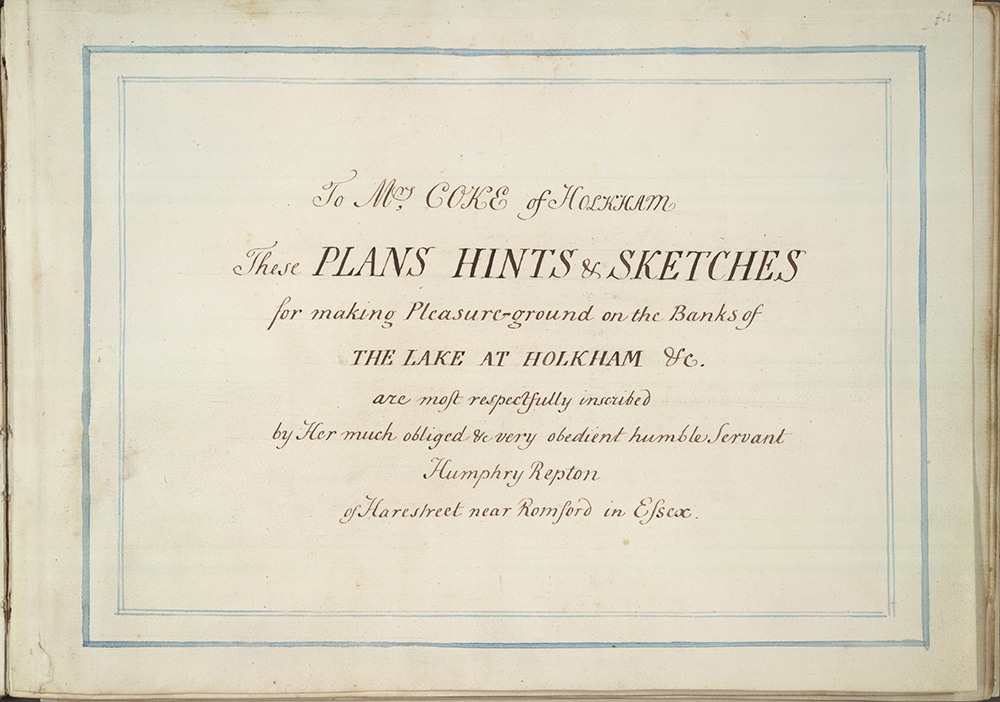
Frontispiece of Repton’s Red Book for Holkham
He planned a walk along the eastern edge of the lake, leading to a boathouse, where he proposed ‘an elegant pavilion’, and on through a tunnel to be completely covered with creeping plants from where the walker could divert onto an upper path: ‘this sort of surprise…will appear a perfect wonder in Norfolk’. A ferry, ‘so contrived as to be navigated with the greatest ease by any lady’, was to link this shore with the opposite side of the lake, where the effect was to be ‘rural but not neglected’.
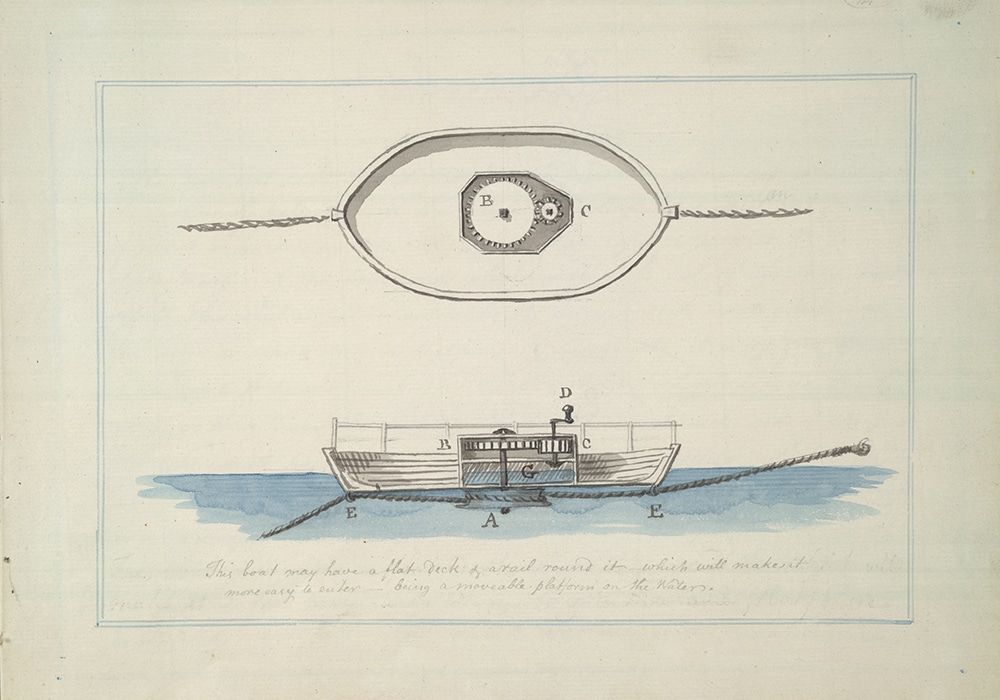
Repton’s design for a chain-link ferry across the lake
Further walks would lead to a ‘romantically bold’ chalk pit, which would be ‘a scene of pleasing gloom’, or southwards to the stables or northwards to the church. Exactly how much of the plan was executed is not certain, but sadly nothing now remains.
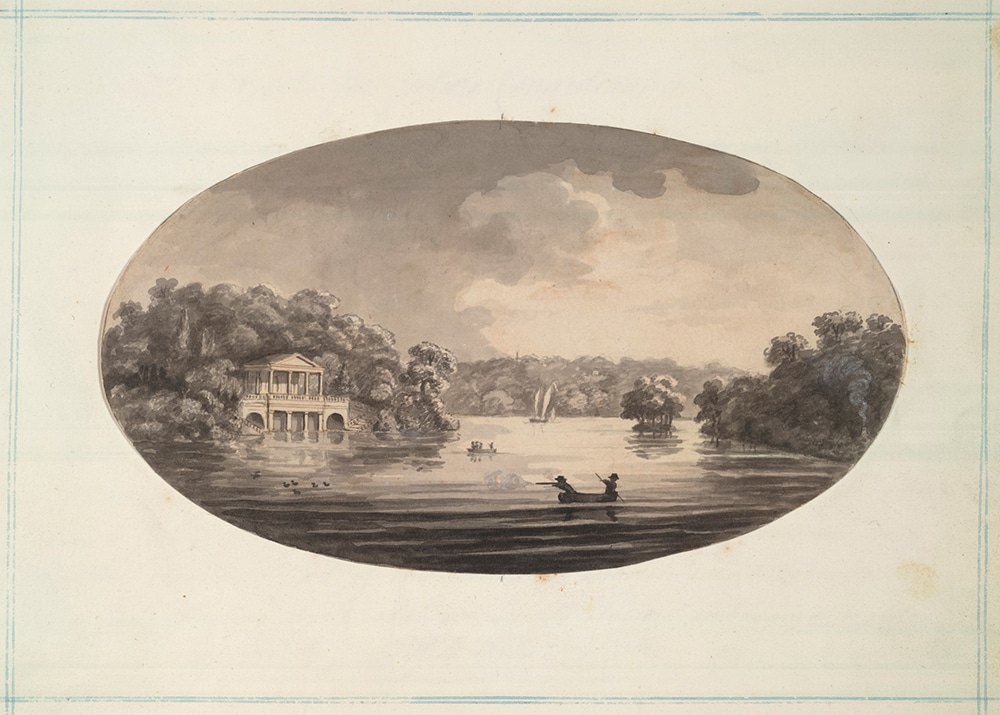
One of Repton’s proposed views
William Emes and John Webb
Thomas William Coke, 1st Earl of Leicester (of the 2nd creation), also known as Coke of Norfolk, and great nephew of Thomas Coke, had more than 2 million trees planted in clumps between 1781 and 1804. The park was massively expanded so that by 1800 it covered 3,000 acres. The lake was given a sinuous twist at its northern end to make it appear less formal and geometric by the landscape designer and former head gardener of Kedleston Hall in Derbyshire, William Emes (1729-1803). The southern end of the lake was also altered between 1801 and 1803 by a student of Emes, John Webb (1754-1828). This was made possible by the removal of the 1st Earl’s kitchen garden to its new site in 1786.
William Andrews Nesfield and William Burn
By the time of Thomas William Coke’s death in 1842, fashions had again moved on and geometric gardens now returned to favour. Thomas William Coke’s son, the second Earl, had imposing terraces and parterres built in the 1850s on the south front of the hall. They were designed by the most popular and successful of mid-19th century landscape gardeners, William Andrews Nesfield (1793–1881) and prominent country house architect, William Burn (1789–1870).
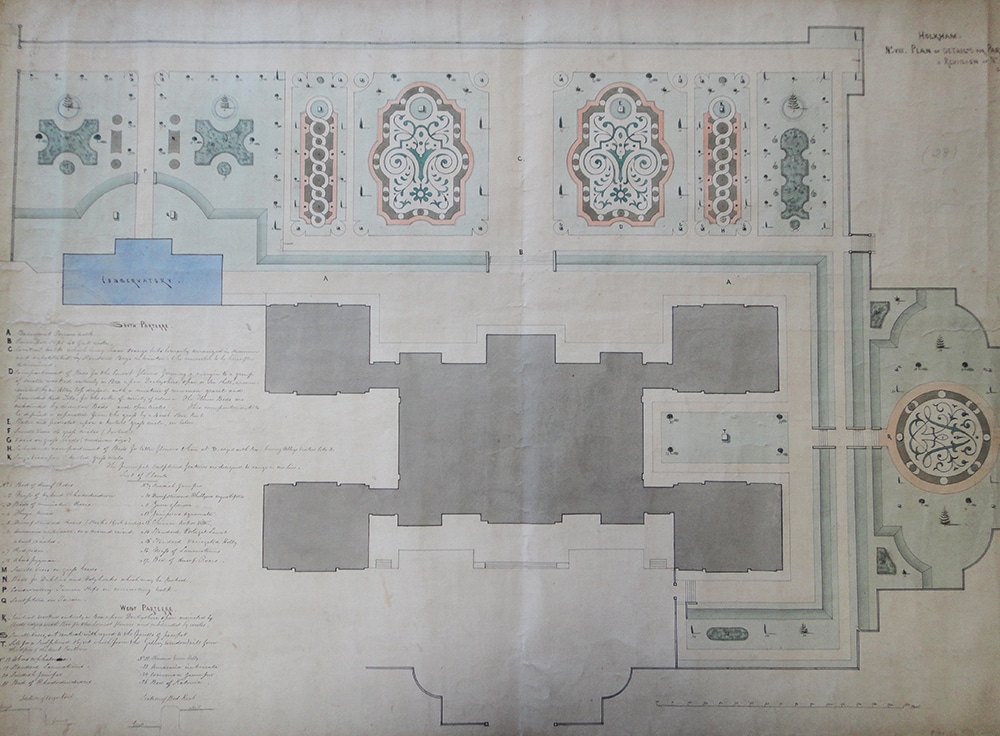
Plan of the Parterres, 1853
The layout and design of the woodland in Holkham park, as the visitor sees it now, is largely the creation of John Sandys, Holkham’s Head Gardener, in consultation with Thomas William Coke.
View all latest blog posts here.
